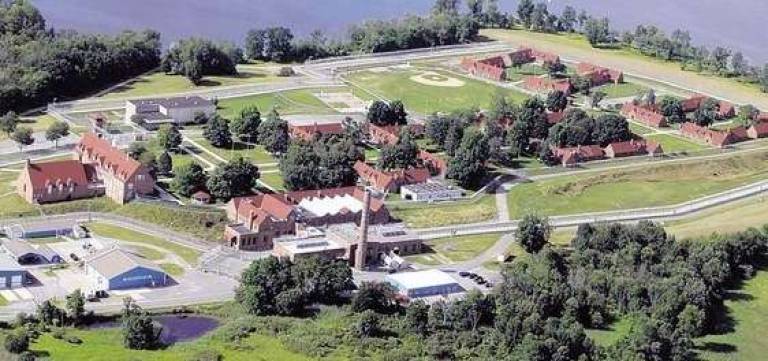Former prison property offers Warwick distinct possibilities

WARWICK The Mid-Orange Advisory Committees report on the redevelopment of the former prison located on Kings Highway is now available.
The report is the culmination of eight committee meetings, a public visioning session and many meetings by five sub-committees that included agency interaction, community outreach, facilities, legal, and records, archives and reports.
The report demonstrates the most current effort by the Town of Warwick to remain primarily a residential and agricultural community and to preserve Warwicks natural beauty and its rural quality of life, states the report.
The town seeks to acquire the property from the state for $1 and redevelop it for public use, including special ties to veterans groups for the benefit of both able-bodied and disabled service men and women.
The towns tax exempt not-for-profit corporation, the Warwick Valley Local Development Corporation (WVLDC), is the vehicle through which Warwick would develop the Mid-Orange property for public use.
The facilities include 726 acres and 81 buildings that range from very substantial to a bus stop shelter.
The committee wants to make the most out of the states Economic Transformation Program, which the governor and legislature created especially for towns like Warwick that are affected by the closing of correctional facilities. The program includes incentives such as tax credits for new jobs, capital investments, real property taxes, and job training for former Mid-Orange employees.
Summary In general, it seems clear that the site divides naturally into quite distinct parts, the reports authors wrote. Specifically:
The main prison area holds together as a unit and invites some large institutional style use.
The other enclosed prison area is another relatively self-contained area. There are several buildings that are currently used for industrial production and could easily accommodate light industrial use.
The Manor house could easily be used by one or more organizations – several nonprofit organizations could share the space.
Several other buildings could function as residential units, perhaps connected to the institutional use of the large prison area.
Ball fields and one related structure could be used for public purposes.
The barn and related structures could be easily adapted to some form of agricultural use.
Wickham Lake offers a major recreational opportunity.
Industry The committee rated industry and light industry as having a high impact on the local tax base, jobs and the economy.
According to the report, the town has a letter of intent from a solar manufacturer to locate in Warwick. QRT Green Energy Enterprises of NY is a partner of Suniva, the 2010 winner of the Platts commercial technology of the year award. QRT manufactures green solar-voltaic energy, sophisticated LED lighting, and power generation that could provide renewable electric power via solar photovoltaic cells supplementing Orange & Rockland Utilities, states the report.
The town also has a letter from Trans Tech Bus Company to relocate to Warwick. The company manufactures and assembles electric buses including the eTrans electric school bus.
According to the report, though, there is not enough room at Mid-Orange for all of the companies that have expressed interest in locating there.
Education and vocational training
According to the report, SUNY Orange at Middletown has expressed interest in some of the buildings that can provide classrooms, lecture halls, and labs for the training of students who require specialized vocational education.
Wetlands Of the 726 acres on the site, 352 acres or about half are designated wetlands. According to the report, the Orange County Land Trust has written a letter expressing interest in preserving 323 acres of freshwater wildlife sanctuary wetlands and aquifers, 150 acres of upland open farmland the historic 1841 Manor House for occupancy by a land steward, OCLT administrative offices, conference, exhibition and seminar rooms, states the report.
The committee rated wetlands preservation as having a high impact on conservation and a low impact on the economy although it would also enhance nearby business properties by making their landscaping more attractive and their commercial value stronger, states the report.
Legal issues The committee reported that it had to consider some legal constraints. For example, the prison maintained a firing range on the property and there is an accumulation of lead on it.
Although the lead could be removed and sold for scrap, it may be subject to costly remediation from which the town would want indemnification from the state before taking title to any of the land.
The legal subcommittee also determined that a casino and parking lot were not viable ideas.
By Birgit Bogler